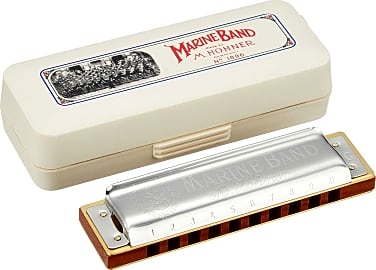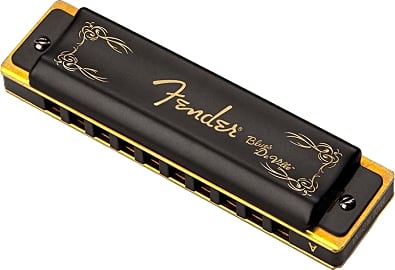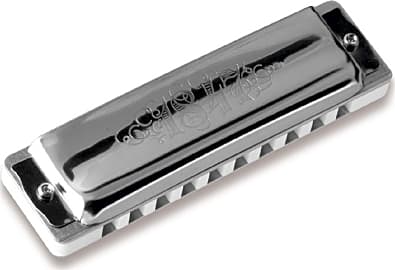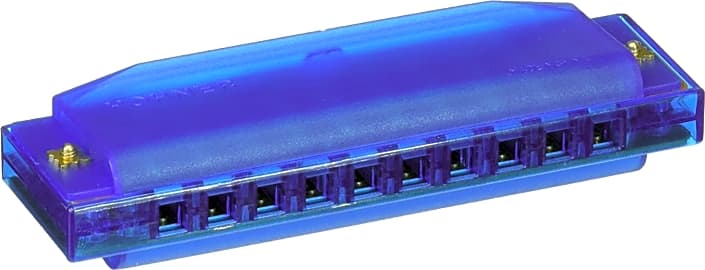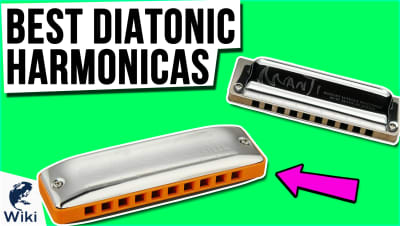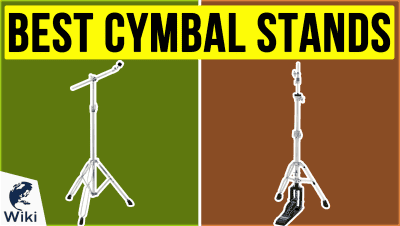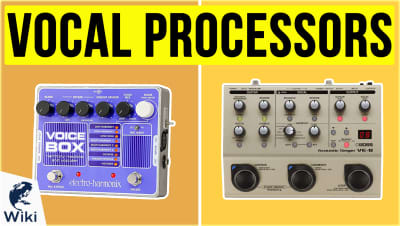The 10 Best Harmonicas

This wiki has been updated 41 times since it was first published in September of 2015. You don't have to be an inmate cooped up in a cell or a hobo riding the rails to enjoy the beautiful sounds that come from a good harmonica. They make for a great introduction to music that won't break the bank, with a couple of exceptions provided for professional musicians who require performance-quality models. We've rated the best of them by tonal quality, ease of playing, and durability. When users buy our independently chosen editorial selections, we may earn commissions to help fund the Wiki.
Editor's Notes
August 13, 2020:
During this round of updates, while all of our previous picks still proved to be excellent choices, we did decide on doing away with the Hohner Special 20 – which we replaced with the Hohner Big River Harp 590BXC, a comparable offering from the company that some describe as having a superior sound – and the Mugig Diatonic MK-1 — which we eliminated to make room for the East Top T2406S, which we thought deserved a spot as the first tremolo harmonica included in these rankings.
Many styles of harmonica exist, and each style includes many shapes, sizes and keys. If it’s your first time investing in one of these instruments, it can all be quite dizzying, so we’ve included basic descriptions of a few of the common types you might encounter while you shop:
Diatonic: Easily the most popular type of harmonica out there, diatonic harmonicas – like the Seydel 1847 Silver, Lee Oskar C Major Diatonic and Hohner Marine Band 1896 – employ a single reed to achieve a tone, and typically have 10 holes, although they can have as few as four and as many as 16. They’re favored by beginners for their affordable price point, as well as the simplicity of their design, which tend to make them easier to pick up.
The downside of diatonic harmonicas is that they’re designed to play in a single key (although Richter-tuned models may be able to do more), which can be quite limiting, even if it's advantageous for users who aren’t well versed in musical theory. Many diatonic harmonicas – including the Hohner Big River Harp 590BXC and Fender Blues Deville – are available in sets, so you can keep an instrument on hand for every key. If you’re a beginner harmonica player looking to break into the hobby, but you’re not quite ready to shell out for a full set of harps just yet, then we recommend starting with a nice key-of-C option, as these models are the most common, and are frequently used as examples in online videos.
Chromatic: While they can have as few as 10, chromatic harmonicas tend to have at least 12 holes, as this is the amount needed to cover a complete chromatic scale, which makes these models capable of playing in any key. This flexibility makes chromatic harmonicas – like the Swan SW1040 and Suzuki SCX-64C – a great choice for skilled musicians with a solid foundation in musical theory. However, the addition of a slide bar controlled by a button on the right side of these instruments makes them a bit trickier than their diatonic cousins.
Tremolo: Although they’re typically much longer than diatonic alternatives, the real defining difference that separates tremolo-tuned options – like the East Top T2406S – is that they have two reeds per note, one a bit flat and the other slightly sharp, which creates a distinct sound. It might not be the first harmonica you pick up, but for experienced users, a tremolo instrument may be an interesting device to experiment with.
June 20, 2019:
Nearly everyone can experience the joy of making music with a harmonica, so we were sure to keep models that are accessible for new musicians as well as those who have more experience. For the former, we've added the Lee Oskar C Major Diatonic, which is a good investment since it allows for growth into an intermediate skill level. Adding to its longevity are the replaceable reed plates, which extend the life of the instrument. We've also opted to keep the Hohner Clearly Colorful Translucent; it's more of a toy, but if you have a kiddo who wants to noodle around but may grow bored quickly, it's a budget-friendly choice. For those who have more experience, we like the classic Hohner Marine Band 1896, which should be instantly recognizable to nearly everyone who's picked up a harp. You can expect a pleasing, rich tone from it, no matter which key you select. And its iconic case comes with it, of course. There's also the pricier Suzuki SCX-64C Chromatix Series. A hand-constructed model, it's a reliable choice for those who might find themselves playing in front of an audience.
Special Honors
Hohner Orchestra Series Bass 58 If you're all about that bass, then you might enjoy the Hohner Orchestra Series Bass 58. The hinged construction puts two octaves at your disposal, both bold and loud, making it the perfect accompaniment in professional situations. hohner.de
Suzuki SCT-128 Tremolo The Suzuki SCT-128 Tremolo is a professional, 16-hole, chromatic beast that costs more than some used cars. It is undoubtedly a lifetime purchase for the serious musician with its plastic resin body and gold-plated brass mouthpiece. suzukimusic.com
Which Type Of Harmonica Is Best?
Diatonic harmonicas are simple, relatively easy to learn, and most commonly have 10 holes.
There are three basic types of harmonica: diatonic, chromatic, and tremolo. The diatonic harmonica is the most common of the three types. It is responsible for the soulful tones of most blues, R&B, jazz, and rock and roll artists. Diatonic harmonicas are simple, relatively easy to learn, and most commonly have 10 holes. They are usually tuned to match the key of one of the 12 notes on the musical scale, but beginners are often recommended to start with a harmonica in the key of C.
The chromatic harmonica traditionally comes with 12 holes, but may come with 8, 10, 14, or 16 holes, as well. The standard chromatic harmonica is also available in any of the 12 keys, but C is most commonly used by professionals and amateurs alike. The button on the side of a chromatic harmonica is used to produce various tones and semitones, and allows players to play every note in many octaves. With 3 octave ranges and 48 tones, the standard chromatic harmonica can produce notes of which a diatonic player could only dream.
The 16-hole variation of the chromatic harmonica produces an even broader range of notes, and because of this, it can take a while to get used to. Its big design can be a bit intimidating, and the extra notes can boggle the mind of an untrained musician. The 8-holed chromatic harmonica provides the exact opposite problem. These harmonicas are great for travel, but their limited range and small size can be a detriment to their being fully engaging for many chromatic players.
The third basic variety of harmonicas is the tremolo harmonica. These harmonicas produce a trembling effect in their sound. They accomplish this by using two reeds per hole, one tuned slightly flat and the other slightly sharp. The result is a wobbling, organ-like note which gives these harmonicas their name. The tremolo harmonica has limited applications, and is therefore the least popular of the three types.
The Invention Of The Harmonica
The invention of the harmonica is credited to Christian Friedrich Ludwig Buschmann, who created it in 1821. There is some uncertainty around this credit, however, as many inventors around the world were simultaneously working on similar instruments in the same year. Free reed instruments controlled with the mouth were created in South America, the United States, and various areas of Europe at roughly the same time.
Due to their wild popularity in the United States, Hohner saw the opportunity to mass produce harmonicas and seized it.
When the first harmonica appeared in Vienna in 1824, it took many by surprise. Many of these harmonicas were purchased, broken down, and duplicated by their purchasers, so their friends and family might enjoy them, as well. This led to some of the first harmonica manufacturing companies in Europe. One man began making harmonicas and shipping them to relatives and friends who had emigrated to the United States, and the reception was overwhelmingly positive. That man was Matthias Hohner.
Due to their wild popularity in the United States, Hohner saw the opportunity to mass produce harmonicas and seized it. By 1858, his company was supplying much of the United States. Harmonicas were enjoyed by soldiers from both sides of the American Civil War. They were also supposedly favored by President Abraham Lincoln and the western rebel Billy the Kid. The popularity of these instruments made them take on a standardized shape as early as 1920, which only helped to increase the number of players.
Most often associated with blues and American folk music, the diatonic harmonica was actually invented to accompany German and European folk music. Unlike many instruments, the harmonica was a success from the very start of production, with a reach extending to multiple continents just a few short years after its invention.
The Harmonica Finds Its Soul
The first harmonicas may have been invented in Europe, but the harmonica found its soul in the United States, particularly in the hands of African American blues musicians. Artists like Sonny Boy Williamson II, Big Walter Horton, and Big Mama Thorton took the simple instrument to expressive new heights through techniques like note bending and vibrato; creating notes from harmonicas that were otherwise unheard of.
This contribution would revolutionize the style of play and expand the arsenal of skills available to harmonica players.
Harmonicas were used by these early singers to create solos in between verses of contemplative lyrics, often on the subject of various causes of strife in the artist's life. The relatable problems and gripping lyrical style of blues music spread like wildfire through the country, influencing every form of music that has come since.
Further possibilities were explored by a young player named Marion Jacobs, known as Little Walker. In order to cut through the sound of guitar amplifiers of the day, Little Walker picked up a radio microphone and, cupping his hands around it and the harmonica, blew his way into history. This contribution would revolutionize the style of play and expand the arsenal of skills available to harmonica players. The sounds created from harmonica microphones can largely determine the sound of the harmonica itself, with many creating distorted sounds that can resemble an electric guitar.





